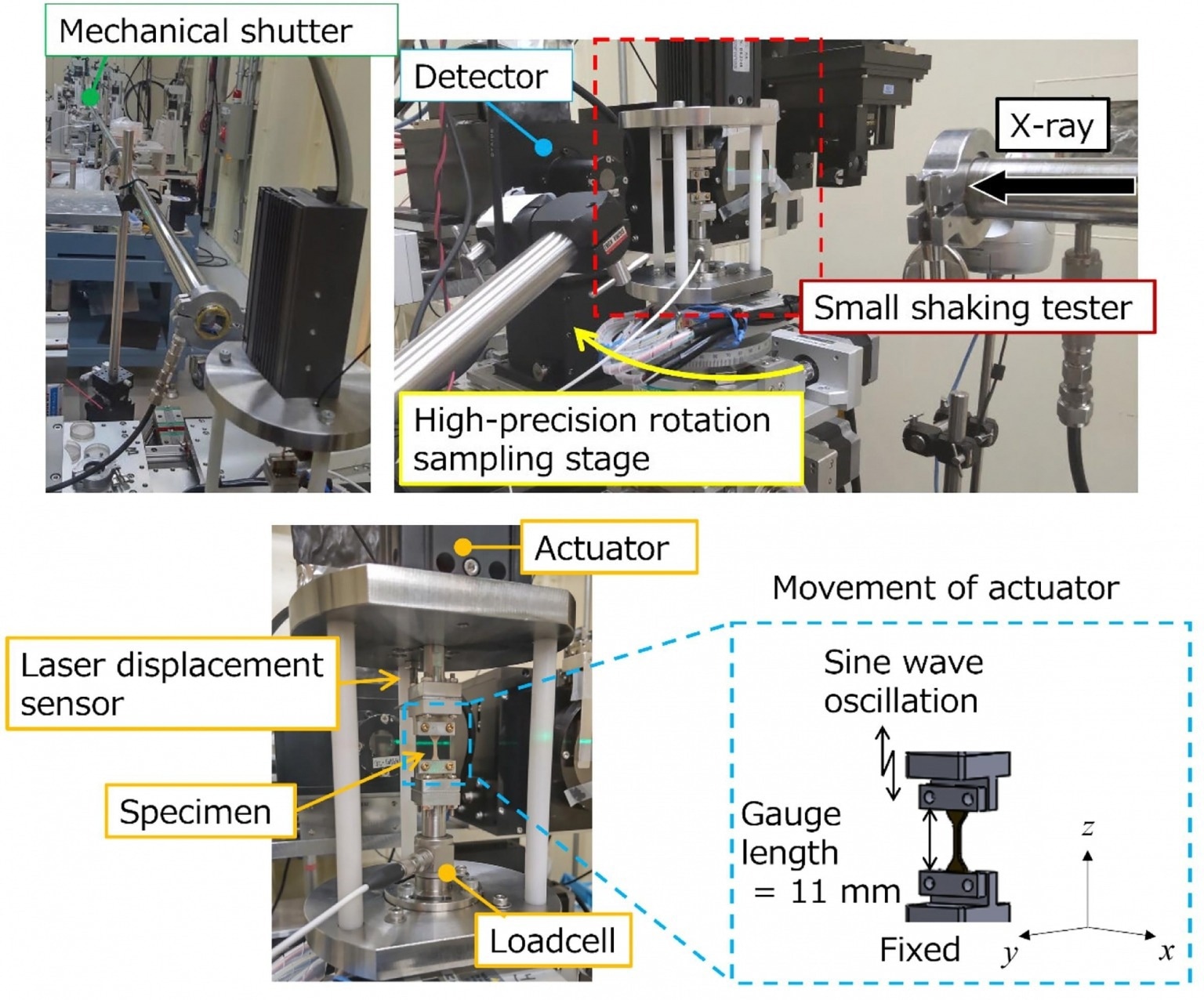Rubber-like materials have outstanding damping properties because they can concurrently display flow-like and spring-like characteristics. Recently, Japanese researchers have created a novel technique that combines dynamic micro X-Ray computed tomography with dynamic mechanical analysis to better understand the dynamic viscoelasticity of these materials.

Experimental setup for the simultaneous measurement of dynamic mechanical properties and dynamic micro X-Ray CT. Image Credit: Waseda University
This method can lead to the production of better materials and improve the current understanding of the microstructure of viscoelastic materials.
Rubber-like materials, which are frequently used in dampeners, have a special quality called dynamic viscoelasticity that allows them to simultaneously display flow-like and spring-like behaviors and transform mechanical energy from vibrations into heat. These materials can be tailored by mixing them with compounds that have particular chemical structures based on the required dynamic viscosity.
The fundamental processes underlying these materials’ unique mechanical characteristics are yet unknown, though. The lack of a complete system that can measure the mechanical properties and observe the microstructural dynamics of these materials simultaneously has been a major contributing factor to this knowledge gap.
Although non-destructive inspection of a material’s internal structure down to nanoscale resolutions using X-Ray computed tomography (CT) has shown promise recently, it is not suitable for observation in dynamic environments.
In light of this, a group of scientists headed by Associate Professor (tenure-track) Masami Matsubara of the Faculty of Engineering, School of Creative Science and Engineering at Waseda University has created a novel system that enables the simultaneous performance of dynamic micro X-Ray CT imaging and dynamic mechanical analysis.
On October 19th, 2023, the study was published online. On December 15th, 2023, it will be published in the journal Mechanical Systems and Signal Processing, Volume 205.
By integrating X-Ray CT imaging performed at the large synchrotron radiation facility Spring-8(BL20XU) and mechanical analysis under dynamic conditions, we can elucidate the relationship between a material’s internal structure, its dynamic behavior, and its damping properties.
Masami Matsubara, Associate Professor, Faculty of Engineering, School of Creative Science and Engineering, Waseda University
The dynamic micro X-Ray CT and a specifically made compact shaker that the team built are the foundation of this innovative technology. The shaker can precisely regulate both vibration frequency and amplitude.
Using this novel method, the researchers looked into the differences between styrene-butadiene rubber (SBR) and natural rubber (NR), as well as the effects of ZnO particle size and shape on the dynamic behavior of SBR composites.
The researchers performed dynamic micro X-Ray CT scans on these materials, rotating them during imaging while subjecting them to shaker vibrations. They then created histograms of local strain amplitudes using the local strains taken from the 3D reconstructed images of the internal structures of the materials.
These histograms, together with the materials' loss factor, a measure of a material’s intrinsic damping, were examined to better understand their dynamic behavior.
The team discovered no noticeable changes between the local strain amplitude histograms of SBR and NR, which have drastically different loss factors. However, in the presence of composite particles such as ZnO, the histograms showed broader strain distributions. This shows that strain inside these materials is non-uniform and varies on particle shape and size, which may have concealed any changes caused by particle addition.
Dr. Matsubara concluded, “This technology can allow us to study the microstructure of rubber and rubber-like materials under dynamic conditions and can result in the development of fuel-efficient rubber tires or gloves that do not deteriorate. Moreover, this technology can also enable the dynamic X-Ray CT imaging of living organs that repeatedly deform, such as the heart, and can even pave the way for the development of artificial organs.”
Overall, this groundbreaking technology has the potential to expand the understanding of the microstructure of viscoelastic materials, potentially leading to the development of innovative materials with improved capabilities.
Journal Reference
Matsubara, M., et al. (2023) In-situ measurement of dynamic micro X-Ray CT and dynamic mechanical analysis for rubber materials. Mechanical Systems and Signal Processing. doi:10.1016/j.ymssp.2023.110875.
Article Revisions
- Jan 6 2025 - Meta Description has been updated to fall inline with Google recommendations and a malformed link has been repaired.